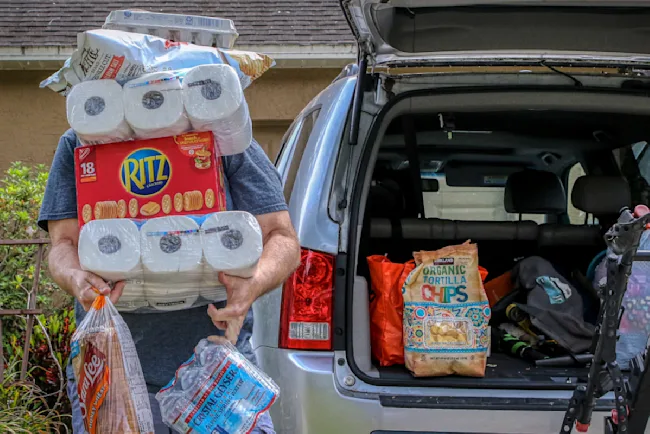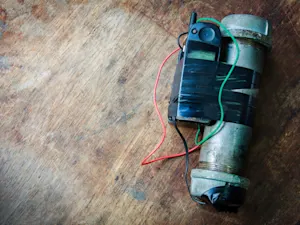
America's Worst Serial Killer? You've Never Heard of Him
Samuel Little's story reads like a nightmarish thriller. Over more than three decades, he evaded justice, leaving a trail of nearly 100 victims across the United States. With shocking confessions and chilling detail, he painted a portrait of terror few have seen, and his ability to slip through the cracks defied every expectation of law enforcement. Here's how this elusive predator committed some of the darkest crimes in American history — and how he finally faced judgment.
Who were Samuel Little's forgotten victims?
Samuel Little targeted women society often overlooks — sex workers, drug users, and homeless individuals. He knew these victims might vanish with hardly a ripple, leaving families without closure and police with dead ends. Little handpicked his victims, and when asked why, he said it was easy. "He looked for women that wouldn't be missed," said assistant prosecutor Mark Piepmeier after interviewing Little about his crimes, as reported by NBC4i.com. "He looked for street people, prostitutes... because he figured he could do it, he could dump them, and no one would miss them for days. He knew what he was doing, and he was very good at it."
Each story in his wake tells of a life cut short, a name erased from memory until investigators pieced the horrors together. Some of his confirmed victims include:
- Yvonne Pless (20) – Macon, Georgia, 1977. Unidentified until recently, she became Little's first known victim at age 20, strangled and discarded near Arkwright Road.
- Annie Lee Stewart (32) – Cincinnati, Ohio, 1981. Little strangled her and left her body abandoned in Grove City, Ohio.
- Mary Jo Peyton (21) – Cleveland, Ohio, 1984. After meeting her in a bar, he strangled her, and her body remained unidentified for years.
- Carol Linda Alford (41) – Los Angeles, California, 1987. Little's DNA finally led to her case closure, and he was convicted of her murder decades later.
- Rose Evans (32) – Cleveland, Ohio, 1991. After offering her a ride, he strangled her in his car and left her in a vacant lot.
- Denise Christie Brothers (38) – Odessa, Texas, 1994. He confessed to her murder years after the fact, eventually securing an indictment in 2018.
How did Little avoid capture for so long?
Little's life as a drifter helped him elude law enforcement for decades. With no fixed address, he traveled from state to state, blending in wherever he went. His choice of victims only aided his evasive tactics. Authorities classified many deaths as overdoses, accidents, or even natural causes, never suspecting foul play. He operated under the radar until 2012, when a minor drug charge in Kentucky finally led police to his DNA.
Little's brazen ability to slip through legal loopholes played a major role in his evasion:
- He faced murder charges twice in the 1980s but won acquittals both times.
- Law enforcement struggled to connect cases spread across 19 states.
- Advances in DNA technology in the 2000s finally allowed investigators to link him to unsolved murders, including those in Los Angeles.
What motivated Samuel Little's crimes?
Samuel Little's motivations speak to a terrifying psyche. He saw murder as a "thrill," telling investigators "It was like drugs. I came to like it," according to Biography.com. According to his confessions, he derived pleasure not just from the act but from the power of holding his victims' lives in his hands. He sometimes let them revive momentarily, only to strangle them again. Chillingly, he would often keep his victims conscious, claiming he liked to "hold them in his arms while they were crying," as reported by Police1.com.
While psychological experts debate the roots of Little's cruelty, his own words reveal the darkness that drove him:
- A fetish for strangulation: Little admitted to developing a neck fetish as early as age five, which later influenced his method of killing.
- "Commissioned" by God: He claimed that God "commissioned" him to end his victims' misery, according to Biography.com, a twisted justification for his brutality.
- Sexual gratification: During some murders, he reportedly experienced sexual arousal, adding a depraved dimension to his violence.
How did investigators finally catch Samuel Little?
In 2012, a routine drug arrest in Kentucky opened the door to Little's dark history. After being extradited to California, police matched his DNA to multiple cold cases in Los Angeles. In 2014, he faced conviction for three murders and received three life sentences. But the depth of his crimes remained hidden until 2018, when Texas Ranger James Holland coaxed confession after confession from Little over hundreds of hours.
Little's arrest and conviction relied on:
- DNA matches from unsolved cases, thanks to advances in forensic technology.
- The FBI's Violent Criminal Apprehension Program (ViCAP), which linked Little to cases across multiple states.
- Detailed confessions — Little's memory stunned investigators, as he described each victim's appearance, the setting, and even drew their portraits. This eerie photographic recall helped close numerous cold cases.
What legacy does this case leave behind?
Samuel Little's story serves as a haunting reminder of society's vulnerability when killers prey on marginalized individuals. His life of terror points to lapses in justice, underscoring the need for systemic change. His case, ultimately resolved through a combination of modern forensics and persistent law enforcement collaboration, reflects both the advances and failings within the justice system.
Little died in prison on Dec. 30, 2020, leaving investigators and families to grapple with the extent of his crimes. Today, his story stands as a cautionary tale on the importance of vigilance, cooperation, and the relentless pursuit of justice.
References: Timeline on 78-year-old man suspected of being one of the 'most prolific serial killers in US history' | Samuel Little | The Timeline Of Samuel Little, The Most Prolific Serial Killer In US History | The most prolific serial killer in history stopped by police working separately, together | Serial killer's confession resolves 1981 slaying case























